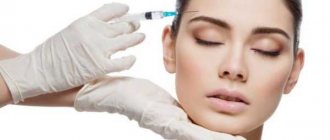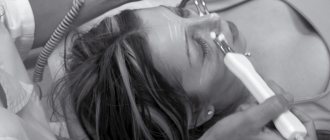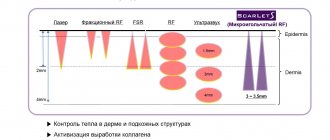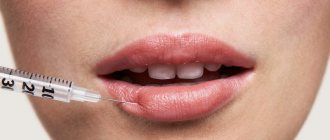Everyone knows that combining alcoholic drinks with antibiotics is extremely dangerous. But once the course of treatment has completed, for how long should you completely give up alcohol in order to avoid negative consequences?
- Read in the article:
- Antibiotic treatment and alcohol: how compatible?
- Alcohol after antibiotics
- How soon can you drink?
- The dangers of alcohol after antibacterial therapy
- Beer after antibiotics
- Alcohol after injections
- Alcohol after antibiotic tablets
- What happens if you take alcohol after taking antibiotics?
- Medicines compatible with alcohol
- Alcohol detoxification
Treatment prices:
| Standard therapy for alcohol poisoning | 4 500 ₽ |
| Double drip | 6 250 ₽ |
| Reinforced drip | 7 500 ₽ |
| Maximum cleansing | 12 000 ₽ |
| VIP body detoxification | 15 000 ₽ |
| Hospital at home | 22 000 ₽ |
| Coding at home Torpedo | 7 500 ₽ |
| Express output and encoding | 13 500 ₽ |
| *when ordering a procedure | for free |
| *travel at night within the region further than 50 km | specify |
| Economy Chamber (6 seats) | 2 000 ₽ |
| Standard room (4 beds) | 3 000 ₽ |
| Increased comfort (2 seats) | 5 500 ₽ |
| VIP chamber (1 place) | 12 500 ₽ |
| Detoxification therapy | 3 500 ₽ |
| Binge relief on an outpatient basis | 6 000 ₽ |
| Consultation with a psychologist | 3 000 ₽ |
| Psychiatrist consultation | 5 000 ₽ |
| General tests, ECG | 2 500 ₽ |
| Escort to the clinic | 6 000 ₽ |
| Advanced hospitalization | 15 000 ₽ |
| Support groups for loved ones of addicts | for free |
| Webinars for relatives of addicts | for free |
| *primary | for free |
Expand
Still have questions? Call us!
8
Free consultation and appointment
Antibiotic treatment and alcohol: how compatible?
Is it really necessary to abstain from alcohol during a course of antibiotics?
Much depends on the active ingredient of the drug. Some types of antibiotics do not interact with alcohol at all, while others may interact normally. Of course, you should not mix alcohol with pills after reading this article. However, knowing certain things will help you not to panic, but to correctly understand the problem if for some reason you were still drinking alcohol during antibiotic therapy.
The list of antibiotics with which it is strictly prohibited to take alcohol includes:
- Cephalosporins . They have a wide spectrum of action and are quite often used in medical practice. If the drug is administered intravenously and alcohol is consumed, dangerous complications may develop.
- Doxycycline . The combination of an antibacterial drug with alcohol is especially dangerous if the patient is diagnosed with liver disease.
- Metronidazole . Manufacturers of the drug indicate that the first dose of alcohol can be drunk no earlier than 48-72 hours after completion of antibacterial treatment. This is explained by the fact that Metronidazole is eliminated from the human body in about two days. It cannot be taken in parallel even with medicinal solutions that contain ethanol.
- Tinidazole . Indications for use of this drug are the same as for Metronidazole. It is also used for pathologies caused by Helicobacter pylori - stomach and duodenal ulcers, gastritis.
- Linezolid . The peculiarity of this product is that it gives a negative reaction when combined with distilled (fermented) alcoholic beverages - wine, beer, gin and tonic, etc.
A little history
The issue of the compatibility of antibiotics and alcohol arose back in the 60s of the last century, when in the United States they began to actively prescribe a new broad-spectrum antibiotic, metronidazole (Flagyl). It was observed that patients who took alcohol at the same time as metronidazole showed very unpleasant symptoms: nausea, vomiting, diarrhea, increased sweating, redness of the skin, rapid heartbeat, headache, drowsiness, dizziness, confusion and many others.
Interestingly, this clinical picture was reminiscent of another that manifested itself back in the 1880s among people involved in the production of rubber, or more precisely its vulcanization. Then, to speed up this process, the chemical disulfiram was used. And the workers who relaxed with alcohol after a shift (having inhaled disulfiram vapor during the day) failed en masse, demonstrating the symptoms described above. In the 1940s, this was remembered, and doctors even had the idea of using disulfiram in the treatment of alcoholism. Patients who consumed this substance with alcohol developed such intolerance (nausea, vomiting, cardiac dysfunction, etc.) that many forgot about alcohol forever. By the way, today disulfiram is patented as Antabuse and is quite sold.
Let's return to the antibiotic metronidazole. Based on the fact that very unpleasant symptoms appeared when used with alcohol, the antibiotic was considered as a treatment for alcoholism, but the matter did not go further than pilot studies. Today, metronidazole is used only for its intended purpose - to treat gastrointestinal infections, including diverticulitis (inflammatory bowel disease), as well as to treat gynecological diseases and sexually transmitted diseases (STDs). Drinking alcohol during a course of metronidazole is strictly not recommended.
Alcohol after antibiotics
When a doctor makes recommendations regarding antibacterial treatment, the question often arises whether alcohol can be consumed with antibiotics. The answer depends on several factors:
- possible consequences of alcohol consumption during therapy;
- class of antibacterial drugs prescribed to the patient;
- volume of drinking;
- age (metabolic levels are different between young and old people);
- presence of chronic liver diseases.
How soon can you drink?
Doctors allow drinking alcohol 3-5 days after finishing antibiotics. This time is enough for toxic substances to be eliminated from the body, and it can respond adequately to alcohol. If the patient suffers from chronic forms of disease and repeatedly resorts to treatment with antibacterial drugs, one should refrain from drinking alcoholic beverages for 2-4 weeks.
How does alcohol affect a driver?
All alcoholic drinks have a detrimental effect on humans. Clear coordination of movements, good vision and quick reaction are especially important for the driver.
After alcohol enters the bloodstream, the following changes occur:
- Coordination of movements worsens . Your hands begin to have poor control of the steering wheel, so any maneuvers on the road become dangerous. An attempt to overtake, turn - everything can end in a collision with another car. The situation becomes more complicated if the asphalt is wet or covered with ice.
- The muscles become more sluggish and fatigue overcomes. Every action is performed smoothly, as if in slow motion.
- The reaction is greatly reduced . If, when sober, it takes a person no more than a second to react to a dangerous situation, then in a state of even mild intoxication, the reaction slows down by ½ second. This time period seems negligibly small, but if you translate the response time into the meters that the car will travel before the driver has time to brake or make the necessary maneuver, it becomes clear that even a fraction of a second plays an important role.
- The field of view is limited . Typically, a person's viewing angle is 180 degrees. Under the influence of ethanol, it narrows significantly. This phenomenon is called "tunnel vision." A person does not see what is happening around him to the right and left. The driver stops noticing road signs, does not react to obstacles when turning, changes lanes, and hits cars. It is also impossible to correctly determine the distance to other cars or stationary objects.
- The logical thought process is disrupted . A person is unable to adequately assess the situation on the road, begins to make rash decisions, exceeds the speed limit, tries to overtake other cars, exposing all road users to enormous risk.
License and certificates:
The dangers of alcohol after antibacterial therapy
When drinking alcohol together with antibiotics, the following consequences are possible:
- Biotransformation disorders in the liver . If you drink alcohol after taking antibiotics, ethanol undergoes biochemical reactions first, and the breakdown and elimination of medicinal components slows down. This increases the likelihood of overdose and the development of intoxication.
- Slow absorption from the digestive tract . Alcohol is partially metabolized in the intestinal walls, so alcohol after taking antibiotics interferes with the absorption process. The treatment will be ineffective, and to stop the infectious process, stronger drugs will be required, which are more likely to cause adverse events.
- Impaired breakdown of ethanol . Some antibiotics and alcohol provoke a reaction similar to the use of disulfiram, which causes nausea, vomiting, dizziness, tachycardia, shortness of breath, and breathing problems. Against the background of concomitant heart diseases, hypertension, and respiratory tract pathologies, alcohol after antibiotics of certain pharmacological subgroups can provoke a serious deterioration in the condition, up to the need for emergency medical care.
How to drink alcohol without harming yourself?
What does it mean to drink a lot, how to drink in moderation, or should you not drink at all – what should you choose?
There is an ambivalent attitude towards alcohol and its consumption in our society: on the one hand, “drinking is harmful to health!”, and on the other, “who doesn’t drink now?” In our opinion, this is due to the fact that alcohol consumption is often viewed by medicine from two extreme positions: the norm (sobriety) and the disease (alcohol dependence). At the same time, abstainers constitute a minority in society: from 40% of the total population (including minors and the elderly) to 10-15% of the adult population. In this regard, many people have a question: “Is drinking alcohol so harmful if it is so widespread, and the doctors themselves, who constantly talk about its dangers, are hardly teetotalers?” Therefore, the purpose of this article is not only to talk about the real dangers and harms that come from excessive alcohol consumption, but also about what constitutes its consumption with minimal risk to health.
Let's start with some important definitions. What is alcohol consumption, abuse and dependence? Alcohol consumption itself, like many other substances, is a type of human behavior. The difference between alcohol (and tobacco) and many other foods is due to its ability to influence human mental activity: emotions, behavior, thinking. Therefore, alcohol is classified as a psychoactive (psychic) substance, which also includes drugs (opioids, psychostimulants and cannabis), psychotropic drugs (barbiturates, which are included with alcohol in Corvalol and Valocordin, benzodiazepines) and toxic substances (glue, gasoline, solvents) ). Alcohol and most psychoactive substances have the potential to cause abuse and dependence in people. Abuse is understood as a type of consumption that harms a person’s physical (increased blood pressure, damage to the liver, heart and nerves) and mental health (insomnia, depression, anxiety), and can also disrupt professional (dismissal), family (divorce, scandals) and public (arrests, drunk driving) life of a person.
Abuse is already a painful condition and requires the intervention of a doctor, but, importantly, at this stage it can also be a regular therapist or neurologist who has skills in short-term intervention for alcohol problems. Alcohol dependence is already a disease, the same as anxiety or depression, in the presence of which a person needs the help of other doctors - a narcologist or a psychotherapist.
Alcohol dependence involves a combination of behavioral, thinking, and physical dysfunctions that develop after repeated use of alcohol. The main symptoms of alcohol addiction are a strong, irresistible need to “drink” (“craving”); impaired ability to control alcohol intake (start and stop of drinking and dose) (“no inhibitions, binges”); desire or unsuccessful attempts to reduce or control drinking; withdrawal state (withdrawal syndrome, “withdrawal”) when stopping or reducing alcohol intake and relief of this state by drinking; tolerance - a gradual increase in the consumed dose of alcohol; ignoring other interests and increasing drinking time; and, finally, the continuation of drinking when it is clearly harmful to health. A diagnosis of addiction may be made when three or more of these signs are present in one month during the past year (for example, weekly one-day heavy drinking on Fridays after work or four weeklong binge drinking sessions in a year).
If in society 5 to 10% of the population abuse alcohol and another 4% of the population (2% of women and 6% of men) are dependent on alcohol, then among the remaining part of the population about 10-20% exhibit excessive alcohol consumption. According to the WHO definition, excessive (hazardous or risky) alcohol consumption is considered to be those levels or types of alcohol that, if continued, will lead to harm to health (i.e., what will become abuse in the future).
It is now believed that the amount of alcohol consumed directly determines the likelihood of developing various alcohol problems (hazardous consumption, abuse and dependence), after which withdrawal from binge drinking may be required. It has been shown that when adults who are not dependent on alcohol consume no more than 20 g of ethyl alcohol per day, the risk of developing problems is minimal. In this case, alcohol consumption should be for no more than 5 days a week with a mandatory 2 sober days. According to WHO, 10 g of ethyl alcohol is taken equal to 1 standard unit (dose) of alcohol. One dose of alcohol is contained in 330 ml. beer 5% ABV; in 140 ml. dry wine (9-11%); in 70 ml. fortified wine (18%); and in 35 ml of strong drinks (40%). To calculate the amount of ethyl alcohol in grams in an alcoholic drink, you need to multiply the volume of the drink by its strength and by a conversion factor of 0.79 (each milliliter of pure ethyl alcohol contains 0.79 g).
Moreover, in some situations, even taking one or two doses of alcohol per day is undesirable: if you drive, if you are pregnant or breastfeeding, when you are taking certain medications, with many diseases, and when you cannot control your drinking (i.e. you have one of the signs of addiction).
Alcohol problems are not only harmful to health and psyche, but also various professional, family and social consequences of excessive drinking.
A low risk of alcohol problems is observed when drinking 3-4 drinks per day for men (20 drinks per week) and 2-3 for women (15 drinks per week). The average risk of problems is observed when consuming 25-35 doses per week for men and 15-25 doses for women. A high risk of alcohol problems occurs when drinking more than 35 drinks per week for men and more than 25 for women. A further increase in consumption indicates abuse and sharply (6.5 times) increases the risk of developing dependence on alcohol and concomitant somatic diseases. This way you can calculate the amount of alcohol you have consumed over the past 7 days, which can be considered an indicator of your overall average alcohol consumption. And then you can assess how much risk your drinking poses to you, and whether it is already harmful.
In addition to the amount of alcohol consumed, the likelihood of developing alcohol abuse and dependence in a particular person is also influenced by hereditary, personal and social factors; they are also called risk factors. Hereditary (genetic) risk factors include parental dependence on alcohol (the risk increases by 3-4 times) and other addictions (drug addiction - the risk increases by 4-5 and maternal smoking - by 2-3 times). Currently, many genes have been identified that are responsible for the development of alcohol dependence, however, they determine only 30-40% of the risk of its occurrence. Those. 60-70% of the risk of alcoholism depends on the person’s personality and his environment.
Genetic differences also influence the physiological and psychological characteristics of people in relation to alcohol consumption. The following features were revealed: a) unusual (slow or accelerated) metabolism (processing) of ethanol - “I get drunk quickly or completely drunk”; b) accelerated development of tolerance - “vodka doesn’t take you”; c) altered reactions to alcohol (irritability, aggression and depression).
What characteristics of a person increase the risk of developing alcohol dependence? The main ones are male gender, early first use of alcohol, young age (16-19 years), life outside of marriage (single, divorced or widower), low income, lack of work, and being retired. Psychological problems that often predispose to the development of alcohol dependence at a young age (up to 25 years) are emotional instability (mood swings, irritability, aggressive behavior), altered types of intoxication, hyperactivity and risky behavior (stimulus-seeking behavior - gambling, presence of multiple sexual partners), as well as higher levels of alcohol consumption at a young age.
Psychological problems that often predispose to the development of alcohol dependence in adulthood (after 30 years) are increased levels of anxiety and depression, impaired communication abilities (shyness), difficulty changing, fear of abandonment, avoidance of problems, lack of meaning in existence and prospects. Social risk factors for alcoholism include a high level of stress in the family for women and stress at work for men, low social status of the family (poverty, poor living conditions), disruption of the structure and function of the family (incomplete for women).
What can be advised to a person who drinks alcohol moderately, but has risk factors for developing alcohol dependence, i.e. may become an alcoholic?
In these people, even moderate-risk levels of alcohol consumption can cause the same problems as low-risk consumption in people without such factors. Therefore, it is necessary to prevent the development of alcohol abuse and dependence in them, and this can only be achieved by constantly observing the boundaries of moderate alcohol consumption. Even single doses of high doses of alcohol (more than 5 doses per day) can contribute to the development of alcohol problems associated with intoxication - poisoning, injuries, accidents, violence; and their long-term consumption of even small amounts of alcohol (3-5 drinks per day) increases the risk of addiction by 2-3 times compared to those who do not have these hereditary, personal and social risk factors. Therefore, exceeding doses is unacceptable for them.
What can be advised to a person who drinks alcohol moderately and has no risk factors for developing alcohol dependence, but is still at risk of becoming an alcoholic? For such people, while maintaining the same level of alcohol consumption, the risk of developing dependence is minimal. However, if they are exposed to unfavorable external (dismissal, divorce, retirement) or internal factors (illness, anxiety and depression), and if they allow alcoholic excesses (drinking large amounts of alcohol - more than 5 drinks per day for 3-7 days) or increase the amount of alcohol consumed regularly, dependence and abuse may develop within a short time.
And finally, what advice can you give to a person who drinks alcohol in dangerous or harmful quantities? What should you say to such a patient? The advice is quite simple - try drinking less, or if that doesn’t work, stop drinking alcohol. How to drink less? Dilute alcoholic drinks, replace alcohol with soft drinks; eat before and after drinking. Try to take your mind off the glass and drink more slowly; do something different to drink less; start later than usual; Take fasting days from alcohol: preferably two or three or even four days a week. Try not to find yourself in high-risk situations where loss of control is possible: in campaigns, with friends, after work, on holidays, after payday, on weekends. Try not to drink when you are bored or lonely, irritated, tense and in a bad mood, with insomnia and anxiety; and if you find yourself in such a situation, leave, refuse. Try other forms of entertainment and relaxation; and, most importantly, learn to refuse. It is important to find people who drink moderately and are willing to support you in your efforts to solve your drinking problems.
The last question that this article will try to answer: what should a person and his family do if they already have an existing dependence on alcohol (alcoholism)?
Stopping consumption is necessary if you experience a frequent desire to drink (even if it is for the purpose of relaxing, relieving stress, or having fun); you cannot control the amount you drink; suffer from a hangover the day after heavy drinking and need a drink to improve your well-being; You need more and more alcohol to get drunk or get back to normal. It is also necessary to stop drinking if you suffer from high blood pressure (alcohol does not treat blood pressure, but, on the contrary, increases the risk of hypertensive crises and strokes), liver disease, pancreatitis, and are taking medications that are incompatible with alcohol (antibiotics, heart medications, medications for pressure, etc.). If you can’t quit on your own, then don’t despair, now there are enough qualified specialists - psychotherapists and narcologists who anonymously: without any registration, reporting to work and deprivation of a driver’s license, will provide you with effective assistance. The main thing to remember is that alcoholism is curable, but the result of its treatment is not the restoration of “the ability to drink 100 grams in a group again,” but the effective preservation of sobriety for a long time.
HAVE YOU LEARNED ABOUT ALCOHOL CONSUMPTION STANDARDS - SHARE THE INFORMATION WITH YOUR FRIENDS!
Treatment calculator
Field score:
Total score:
Patient age
Length of use
What he uses Has he previously undergone treatment Consent to treatment Concomitant diseases Employment
Waiting for values to be entered
Beer after antibiotics
Drinks classified as light alcohol (beer, wine) are allowed to be consumed 3-5 days after the end of treatment. Vodka and stronger alcohol are allowed to be consumed only after 10-12 days. Failure to comply with this requirement leads to negative consequences, including the death of the patient.
Alcohol after injections
The interaction of a drug with ethanol is influenced by the drug itself and its quantity, and not by the form of administration. Therefore, even after intramuscular administration of antibiotics, it is necessary to abstain from alcohol for several days.
Alcohol after antibiotic tablets
The tablet form of drugs enters the body through the digestive system. Active substances in antibiotics can negatively affect the gastrointestinal tract. When drinking alcohol together with or after these drugs, it is fraught with the development of gastrointestinal diseases.
Can alcohol kill coronavirus?
In the first weeks of the emergence of a new disease, various hypotheses for its treatment arose. One of them was the myth about the effect of alcohol on coronavirus: the Chinese suggested that ethanol destroys pathogenic pathogens and prevents the development of the disease at the initial stage.
In fact, you can become infected with coronavirus through the mucous membranes of your eyes, nose or mouth. It concentrates in the upper respiratory tract and settles on the walls of the lungs and bronchial tree. This makes it inaccessible to antiseptics in any form.
For a common cold and hypothermia, a healthy person can drink one glass of wine to reduce the risk of illness. A small amount of alcohol accelerates blood flow, increases body temperature, and restores tissue nutrition. It is quickly broken down and eliminated without causing harm. Such light “stress” tones the blood vessels and helps avoid complications. But we are talking about a high-quality drink that contains healthy tannins, tannins with an antiseptic effect. You can engage in such self-medication only in the absence of fever, chills and signs of flu.
The report and information posts of the World Health Organization dated February 13, 2021 stated that alcohol in any form does not reduce the risk of contracting coronavirus; it weakens the immune system, leading to complications in patients.
What happens if you take alcohol after taking antibiotics?
There are a number of antibiotics that, when in contact with alcohol, give extremely unpleasant symptoms - the so-called disulfiram-like reaction. In this case, the person experiences the following symptoms:
- intermittent heavy breathing,
- increased heart rate,
- limb spasms,
- redness of the face, neck, chest area, “heat” in them,
- Strong headache,
- nausea and vomiting.
Large doses of alcohol can be fatal!
These symptoms are very difficult to bear, often causing fear of suffocation or death.
Medicines compatible with alcohol
Most antibiotic components have adverse effects. There is a group of antibiotics that have no contraindications. These include:
- penicillin-based drugs,
- amoxil,
- cephalexin,
- Zithromax and some others.
However, no special studies have been conducted to confirm the danger of the combination. There are only observations and conclusions of doctors who deliberately did not investigate. It’s just that the instructions for these medications do not contain any comments regarding the interaction of the elements. Alcohol-containing tinctures are often used for therapy against colds.
Alcohol detoxification
If negative symptoms occur when using alcohol and antibiotics together, you should immediately call a narcologist to detoxify the body.
This procedure is most often performed in the form of a dropper, since this method allows:
- Bypass the gastrointestinal tract,
- Quickly deliver drugs to all cells of the body,
- If the condition worsens, the doctor can quickly change the composition of the drugs or adjust the dosage.
Doctors can conduct detoxification both in the clinic and at home. Usually within an hour after the procedure the patient feels a significant improvement, and after 4 hours the symptoms are completely eliminated. If necessary, the doctor can put the patient into medicated sleep during treatment.










